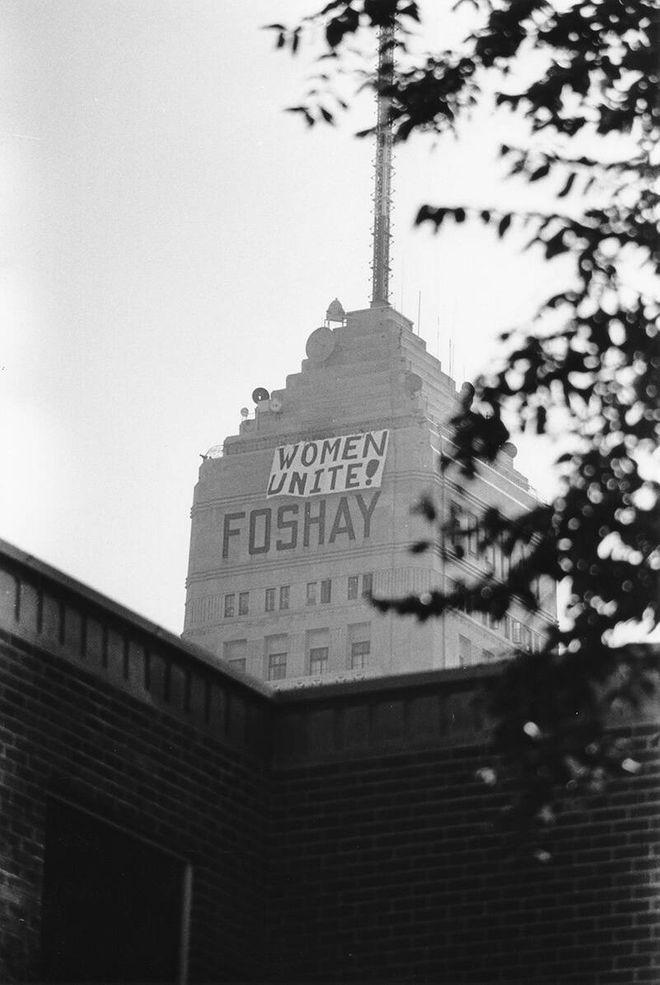Minnesota in the 70s: Authors Explore the Decade of Change
Book behind Twin Cities PBS documentary sheds new light on decade


Tpt’s film Minnesota in the 70s is an adaptation of the book by co-authors Dave Kenney and Thomas Saylor. The film was created in collaboration with Minnesota Historical Society Press. As is often said about adaptations, ‘the book is better.’ So here, taken from the introduction of the book and reprinted with the permission of our friends at MNHS Press, is the introduction to the book that offers insights on the co-authors’ approach to scholarship and storytelling on this pivotal decade.
Mention the 1970s to Americans old enough to have lived through that time, and their responses may be about Watergate and the end of US involvement in Vietnam, inflation and gas shortages, even polyester leisure suits and Saturday Night Fever. By contrast, the 1960s often evokes images of the Kennedy years, the civil rights movement, campus protests, even the first moon landing: a society moving, striving, achieving. And for many the 1980s are linked to Ronald Reagan and a conservative revival, an economic upswing, tax cuts, and a religious awakening.
Caught in the middle, the 1970s are at times portrayed merely as the decade after the 1960s, or the decade before the 1980s, lacking any real definition of its own beyond superficial (disco), silly (pet rocks), or self absorbed (the narcissistic “me decade”).
'Far More Darker' a Decade
But like the 1977 blockbuster film Saturday Night Fever, a closer look at the 1970s reveals more than just years stranded in the middle, squeezed by higher-profile periods on either side. The film of course leaves viewers with enduring images of Tony Manero (John Travolta) in the disco and on the streets of Brooklyn, and the sounds of the Bee Gees. But the film also reveals what historian Bruce J. Schulman calls “a far more serious, and darker, portrait of American life in the era of malaise.” Tony Manero deals with, and feels trapped by, some of the challenges facing American society during the 1970s: ethnic conflict, urban decay, and dead-end jobs.
So too with the decade itself: behind the simple images were years of profound challenge and change.

Inflation and the Oil Crisis
The 1970s were above all a time of economic transformation. Americans felt the impacts of “stagflation,” simultaneous inflation and unemployment, and an oil embargo. Aging industries, especially manufacturing, were buffeted by the twin storms of an interest rate spike and the higher energy prices brought on by the oil crisis. Numerous businesses closed, others downsized or relocated; millions of men and women lost their jobs. And if they found new ones, wages typically were lower. New industries, for example those linked to high tech or computers, couldn’t make up the difference.
Politically, voters veered from one party and position to another in a futile search for solutions. America witnessed four presidents—Nixon, Ford, Carter, and Reagan (elected in 1980)—in less than seven years. But confidence in elected leaders, shaken by Watergate, remained at a low ebb.

Environment to Abortion
And Americans proved willing to challenge more than just their political leaders. They called accepted beliefs into question, including marriage and family, race and sexuality, and the role of religion. Individuals and groups alike concerned themselves with the environment, took a hard look at how their actions impacted the world around them, and demanded change. Also, taking a page from the 1960s book of campus protest and the civil rights movement, others, including women, American Indians, the gay community, and farm workers, showed themselves willing to stand up and demand their rights. Equally important, a broad cross section of Americans rode this wave of activism and addressed new issues like taxation, publicly funded construction projects, busing, and abortion rights.
New Perspectives on the Decade

Recent years have seen an increase in scholarly and popular attention to the 1970s and its importance to American society. Cultural and economic historians, both on the Left and the Right, have begun to present their interpretations of the period. Among the more insightful and significant are Bruce J. Schulman’s The Seventies: The Great Shift in American Culture, Society, and Politics; Thomas Borstelmann’s The 1970s: A New Global History from Civil Rights to Economic Inequality; David Frum’s How We Got Here: The 70s, The Decade That Brought You Modern Life—for Better or Worse; and Judith Stein’s Pivotal Decade: How the United States Traded Factories for Finance in the Seventies. While these authors may disagree with each other’s findings, sometimes sharply, they do share one opinion: this was a decade that mattered.
Minnesota in the ’70s is conceived of as a modest addition to this literature, one voice in a larger dialogue. But this book does more than just contribute to a national debate. Despite an expanding national literature, there is a surprising dearth of works on the state during this formative decade, even though the state underwent important and far-reaching changes. This volume works to fill this gap in the literature on Minnesota during this period.
But having arrived at the decision to tell the story of Minnesota in the 1970s, we encountered several questions. First, just when did the 1970s begin and end? After all, the concept of a “decade” is too neat; historical trends frequently spill over their assigned starting and ending dates. Historians writing about the national scene provided us with some ideas. Bruce Schulman, for example, argues that 1968 marked the end of one decade and the start of another, while another historian, Laura Kalman, identifies 1975 as the starting date and links her interpretation to the 1974 resignation of Richard Nixon. Most others fall somewhere in between.

'Minnesota Miracle'
For Minnesota, we believe the decade of the 1970s began in 1971 with the adoption of the so-called “Minnesota Miracle.” This broad-based agreement on taxation and spending represented a new political coalition, one that remained in place until much later in the decade. At the other end, we believe the decade came to a close with the elections of November 1978, when leading Democratic Farmer Labor Party (DFL) politicians were turned out of office and Republicans returned armed with a new agenda of social issues and tax policies. Bookend style, the first and last chapters of this volume examine the events of 1971 and 1978, respectively.
A second consideration we faced was how best to tell the story of Minnesota during the 1970s. It’s a tall challenge to tell the story of a state and its people during an entire decade. Seeing a chronological format as too wooden, we selected a thematic and narrative approach. Accordingly, each of the book’s ten chapters has a single narrative spine, one story that we feel represents larger forces at work. This approach allowed us to focus on the personal dimension and humanize larger trends and movements.
As we read, researched, and talked with Minnesotans who lived through the decade, several interpretive themes emerged as most important: activism and protest; transformation; and environmentalism. We believe these ideas combined to illuminate the most significant developments, personalities, and actions.

Upheaval Everywhere
The stories we present in Minnesota in the 70s follow this thematic approach. In addition to the two chapters dealing with the political changes of 1971 and 1978, for example, we use food and food shopping to examine how the state’s economy was transformed, and visit rural southwestern Minnesota to explain the upheavals in small towns and farming communities.
By tracing the actions and impacts of the American Indian Movement, we show how citizens stood up and demanded their rights, and argue that protest had become mainstream with the story of Aitkin County’s resistance to the surreal Minnesota Experimental City.
Other chapters explore school desegregation battles in the Twin Cities; the lengthy and vocal debate on the downtown Minneapolis stadium that became the Metrodome; the rise to prominence of the music industry; and the environmental impact of taconite mining in northeast Minnesota.
But recognizing the complexity of issues, and the multitude of actors and actions, we included a number of brief descriptive pieces that reminisce and add context to each chapter. Some of these people, places, and events we expect will be familiar to readers; we think others should be.
Other authors might construct the story of Minnesota in the 1970s very differently, and we accept that. In fact, we welcome future works on the subject that complement this volume, or even that take issue with its conclusions or our way of telling the story. By offering a closer look at the 1970s, we hope this book provokes discussion and contributes to a better understanding of the history of our state and the people who made it.
Materials provided by the Minnesota Historical Society
